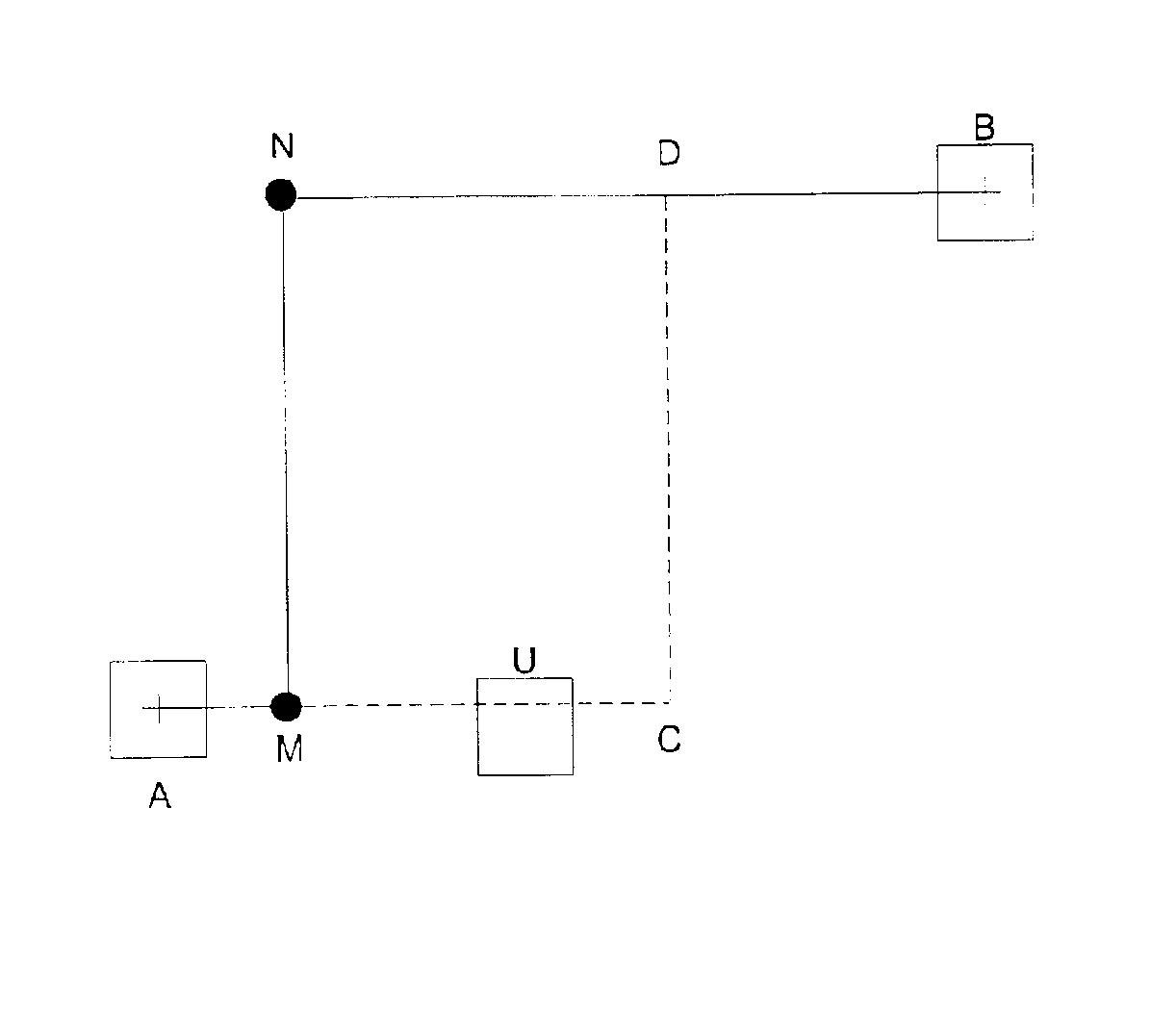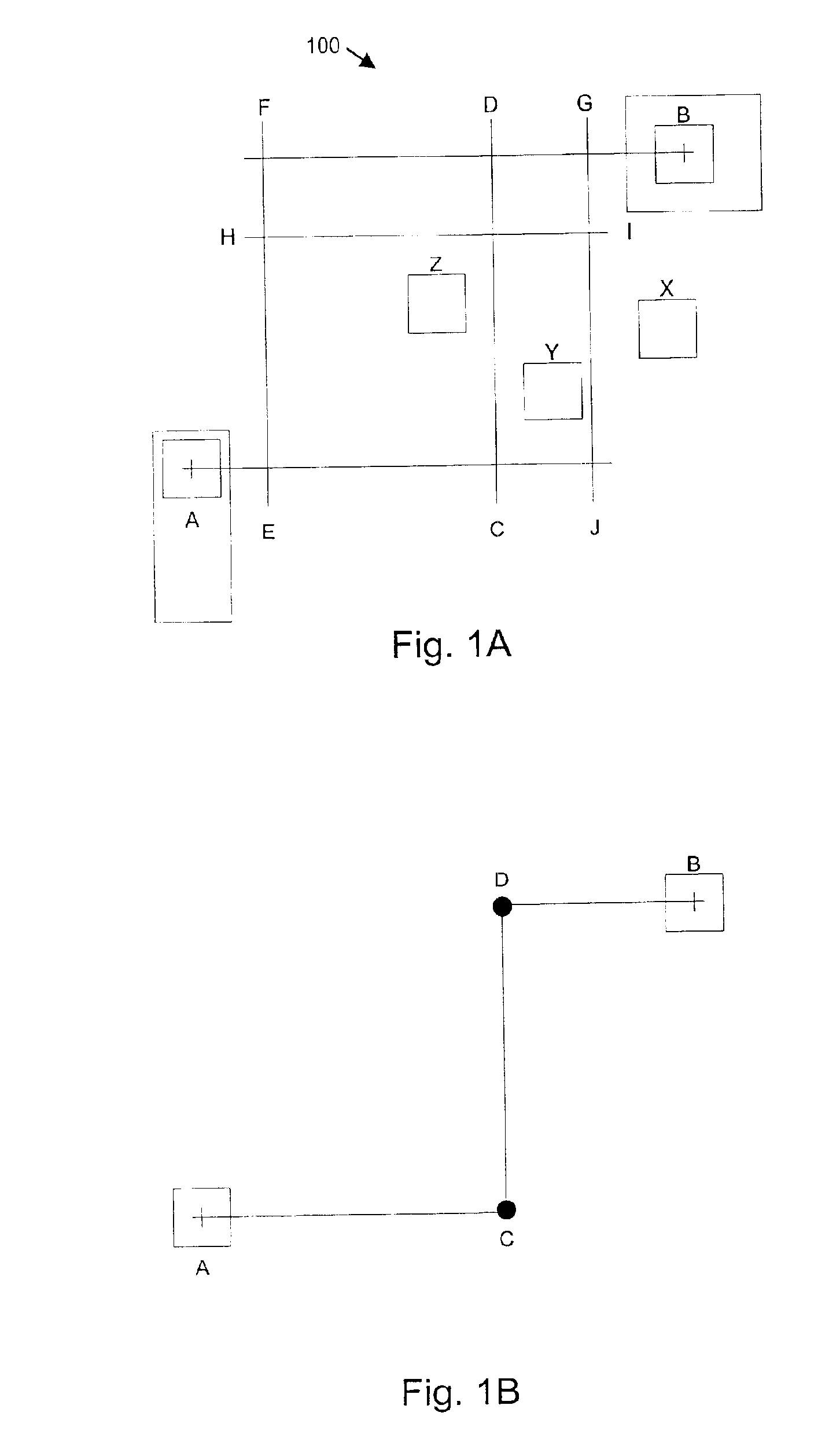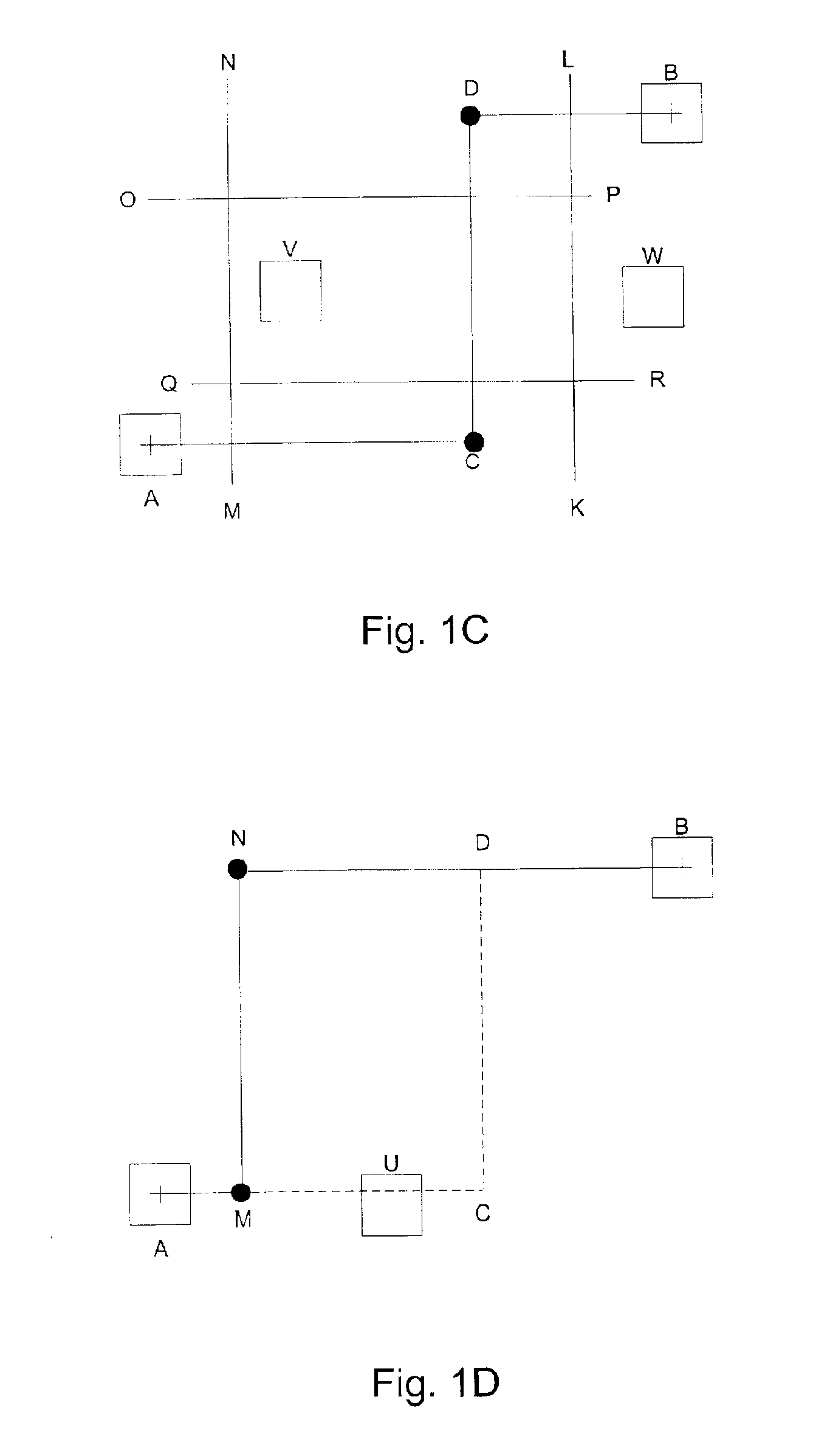Method for routing connections in the display of a network topology
a topology and network technology, applied in the field of computer user interfaces, can solve the problems of ever increasing complexity and density, difficult to achieve efficient, organized and aesthetically pleasing routing, especially in “real time”, and achieve the effect of fast uniform and effective routing
- Summary
- Abstract
- Description
- Claims
- Application Information
AI Technical Summary
Benefits of technology
Problems solved by technology
Method used
Image
Examples
Embodiment Construction
A preferred embodiment of the invention is incorporated into a software product called “SANavigator” produced and distributed by SANavigator, Inc.
FIG. 1A illustrates a portion of a screen display of the SANavigator interface of the present invention.
In FIG. 1A, screen display portion 100 includes interconnected nodes A and B. Nodes include any type of network device such as a hub, server, switch, servers, client processors, computers, routers, etc. Typically, a node can be any type of hardware device or functionality that is of interest in analyzing, creating or managing a communications network. Further, as described in the above-referenced related applications, a preferred embodiment of the present invention allows nodes to be grouped into “group nodes” which can then be represented as a single icon, or node, in a multilayer representation.
A group node of a second layer in a multilayer representation can be selectively expanded to display nodes contained in a first layer. A lower ...
PUM
 Login to View More
Login to View More Abstract
Description
Claims
Application Information
 Login to View More
Login to View More - R&D
- Intellectual Property
- Life Sciences
- Materials
- Tech Scout
- Unparalleled Data Quality
- Higher Quality Content
- 60% Fewer Hallucinations
Browse by: Latest US Patents, China's latest patents, Technical Efficacy Thesaurus, Application Domain, Technology Topic, Popular Technical Reports.
© 2025 PatSnap. All rights reserved.Legal|Privacy policy|Modern Slavery Act Transparency Statement|Sitemap|About US| Contact US: help@patsnap.com



